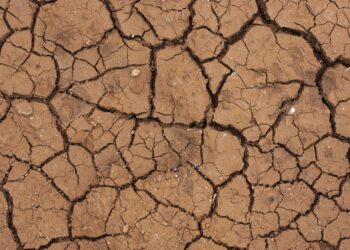Navigating the Basics of Global Warming: A Starter Guide
Global warming is one of the most pressing environmental issues facing the world today. This phenomenon refers to the long-term rise in Earth’s average surface temperature due to human activities, primarily the release of greenhouse gases from burning fossil fuels, deforestation, and industrial processes. Understanding the basics of global warming can help individuals and policymakers make informed decisions to mitigate its effects. This guide provides an overview of the causes, impacts, and solutions to global warming, offering a foundation for those looking to deepen their understanding of this critical issue.
What is Global Warming?
The Greenhouse Effect
Global warming is often associated with the greenhouse effect. This natural process involves certain gases in Earth’s atmosphere, such as carbon dioxide, methane, and nitrous oxide, trapping heat from the sun. While essential to maintaining the planet’s habitable temperature, human activities have intensified this effect, leading to higher global temperatures.
Human Contributions
The primary human contribution to global warming is the emission of greenhouse gases. The burning of fossil fuels like coal, oil, and natural gas for energy and transportation produces large amounts of carbon dioxide. Agricultural practices and deforestation also contribute significantly by reducing the number of trees that can absorb CO2, releasing more of these gases into the atmosphere.
Impacts of Global Warming
Changes in Climate Patterns
Global warming affects climate patterns worldwide, leading to weather extremes. Increased temperatures can result in more frequent and severe heatwaves, droughts, and reduced snowfall and ice cover.
Rising Sea Levels
As global temperatures rise, polar ice melts, and glaciers retreat, contributing to rising sea levels. This can lead to flooding of coastal areas and islands, threatening habitats, human settlements, and causing environmental displacement.
Biodiversity Loss
Higher temperatures and changing landscapes directly impact plant and animal species, leading to altered habitats and increased risk of extinction for many species.
Addressing Common Questions
Is Global Warming the Same as Climate Change?
While often used interchangeably, global warming and climate change are not synonymous. Global warming refers specifically to the Earth’s rising surface temperature, while climate change includes global warming and its various effects on weather patterns, wildlife, and geography.
Can We Reverse Global Warming?
Reversing the damage already done by global warming is challenging but mitigating further damage is possible. Through comprehensive international cooperation and changes in policies and individual behaviors, humanity can curb the emissions contributing to global warming.
What Can Individuals Do?
Individuals can impact by reducing their carbon footprint. Actions include using energy-efficient appliances, reducing waste, recycling, using public transport, and supporting renewable energy sources.
Global Strategies to Combat Global Warming
International Agreements
International agreements such as the Paris Agreement aim to collectively reduce global greenhouse gas emissions. Signatory countries pledge to keep global temperature rise this century below 2 degrees Celsius above pre-industrial levels.
Renewable Energy
Investing in renewable energy sources like solar, wind, and hydroelectric power can drastically reduce dependence on fossil fuels, the primary culprits behind CO2 emissions.
Energy Efficiency
Improving energy efficiency in buildings, vehicles, and industry can also significantly cut emissions. This includes enhancing insulation in homes, upgrading to energy-efficient appliances, and encouraging the use of electric vehicles.
Conclusion
Navigating the essentials of global warming involves understanding its causes, acknowledging its impacts, answering pivotal questions, and implementing practical solutions. By educating themselves and participating in broader mitigation efforts, individuals can contribute to a more sustainable future. While the task is monumental, the coordinated, global response to this existential threat could pave the way for preserving the planet for future generations. As global citizens, embracing responsibility and advocating for change is not just beneficial; it is imperative for the survival and prosperity of all Earth’s inhabitants.










